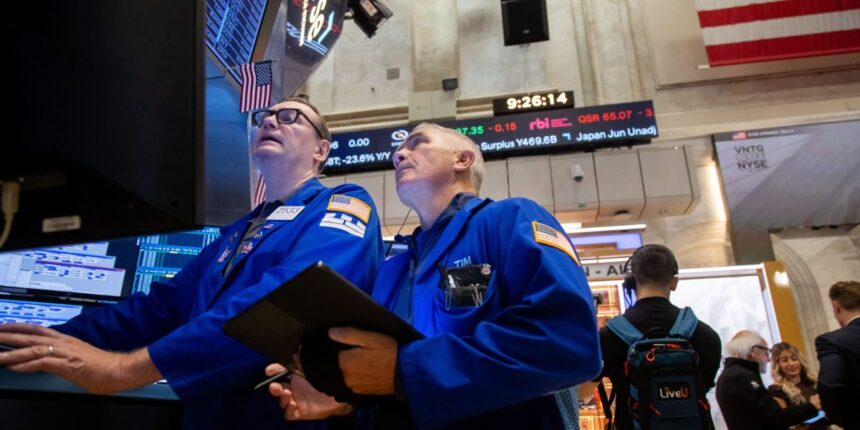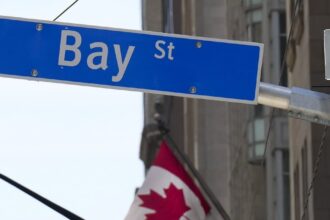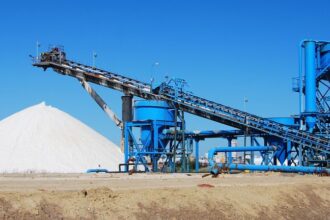Wall Street traders huddled around screens Tuesday morning as markets opened sharply lower, responding to President Trump’s announcement of a sweeping 25% tariff on all Chinese imports. The policy shift sent immediate shockwaves through global markets, with the Dow futures plunging 450 points before the opening bell.
“We’re seeing a direct and immediate market response to what could be the most significant trade policy shift since 2019,” said Marcus Chen, chief economist at Goldman Sachs. “The inflation implications are substantial and potentially lasting.”
The timing couldn’t be more precarious. July’s Consumer Price Index, released just hours after Trump’s tariff announcement, showed inflation already running at 3.8% annually—well above the Federal Reserve’s 2% target. Economists now project the new tariffs could add an additional 0.7-1.2 percentage points to inflation figures by year-end.
Federal Reserve Chair Sarah Williams, speaking at an economic forum in Denver, acknowledged the challenging position facing the central bank. “We find ourselves at a crossroads between addressing persistent inflation and responding to new policy variables that could fundamentally alter our trajectory,” Williams noted, carefully avoiding direct criticism of the administration’s trade stance.
The tariffs particularly threaten consumer electronics, apparel, and household goods sectors, where Chinese manufacturing remains dominant despite years of attempted supply chain diversification. Best Buy shares dropped 7.2% in early trading, while Target and Walmart fell 4.3% and 3.8% respectively.
For everyday Americans, the math is straightforward and concerning. A family purchasing a $1,000 refrigerator could soon pay $250 more if retailers pass along the full tariff costs. The same applies across thousands of consumer categories from smartphones to children’s toys.
“This represents the most significant inflation risk we’ve seen since the post-pandemic supply chain crisis,” said Elaine Thompson, senior retail analyst at Morgan Stanley. “Unlike temporary supply disruptions, tariff-driven inflation tends to become structurally embedded in consumer prices.”
The administration defended the move as necessary leverage in ongoing negotiations with Beijing over intellectual property protections and market access. “Sometimes short-term economic discomfort is necessary for long-term economic strength,” said Treasury Secretary James Harrison in a hastily arranged press conference.
Bond markets reflected investor concern about longer-term inflation prospects, with the 10-year Treasury yield jumping 15 basis points to 4.68%, its highest level since January. Gold prices surged 2.3% as investors sought traditional inflation hedges.
For the Federal Reserve, which had signaled potential rate cuts later this year, the policy shift creates a significant dilemma. Futures markets now show traders pricing in just a 25% chance of any rate cut in 2025, down from 78% probability just one week ago.
“The Fed was finally seeing the light at the end of the inflation tunnel,” said Robert Jackson, chief investment strategist at Fidelity Investments. “These tariffs effectively extend that tunnel considerably, likely forcing them to maintain higher rates for longer.”
As Wall Street digests these developments, one question remains paramount: will American consumers ultimately bear the cost of this economic chess match between Washington and Beijing? For now, markets seem convinced they will—and they’re pricing in that pain accordingly.










